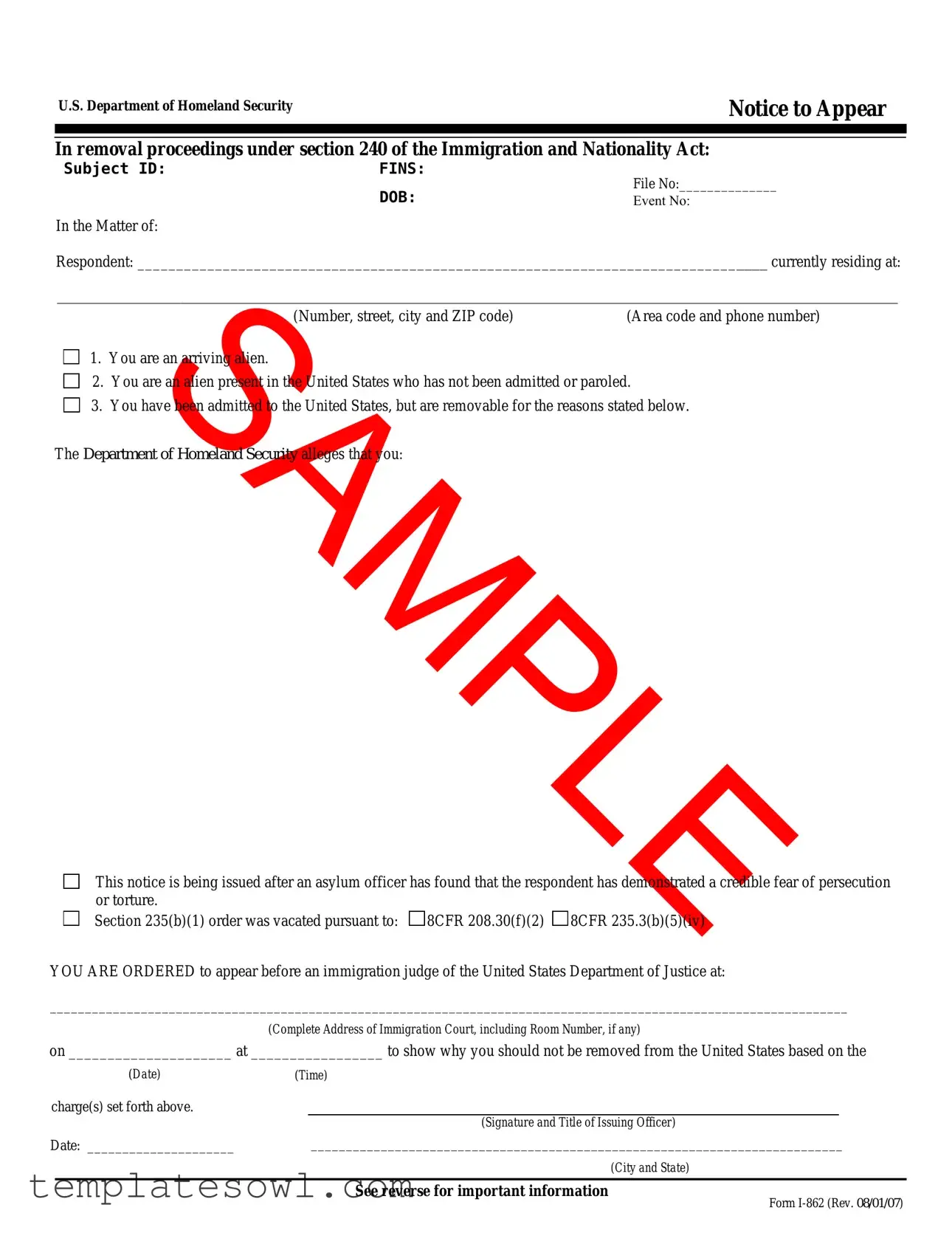U.S. Department of Homeland Security |
Notice to Appear |
|
|
In removal proceedings under section 240 of the Immigration and Nationality Act:
Subject ID: |
FINS: |
File No:______________ |
|
DOB: |
|
Event No: |
In the Matter of: |
|
|
Respondent: _________________________________________________________________________________ currently residing at:
_____________________________________________________________________________________________________________
(Number, street, city and ZIP code) |
(Area code and phone number) |
1. You are an arriving alien.
2. You are an alien present in the United States who has not been admitted or paroled.
3. You have been admitted to the United States, but are removable for the reasons stated below.
The Department of Homeland Security alleges that you:
This notice is being issued after an asylum officer has found that the respondent has demonstrated a credible fear of persecution or torture.
Section 235(b)(1) order was vacated pursuant to: |
8CFR 208.30(f)(2) 8CFR 235.3(b)(5)(iv) |
YOU ARE ORDERED to appear before an immigration judge of the United States Department of Justice at:
__________________________________________________________________________________________________________________
(Complete Address of Immigration Court, including Room Number, if any)
on _____________________ at _________________ to show why you should not be removed from the United States based on the
(Date)(Time)
charge(s) set forth above.
|
|
(Signature and Title of Issuing Officer) |
|
Date: _____________________ |
____________________________________________________________________________ |
|
|
(City and State) |
|
|
|
|
|
|
See reverse for important information |
|
|
Form I-862 (Rev. 08/01/07) |

